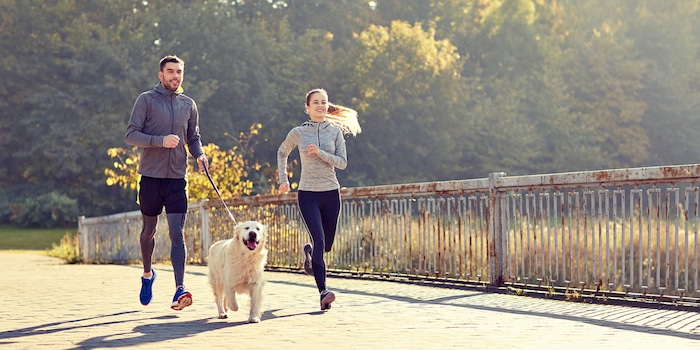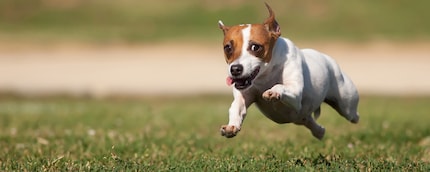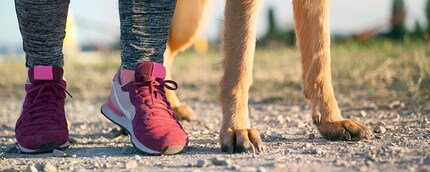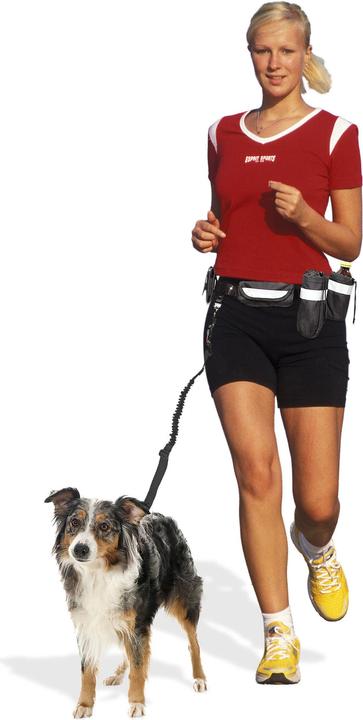

Your four-legged fitness partner – how to take your dog running
Having plenty of excess energy, dogs are great running partners. Before you hit the road together, though, you'll need to train your dog to run with you. Read on to find out everything you need to know about running with your furry friend.
Is your dog a suitable running partner?
Running together might be too hard work for a lapdog with short legs, but some dog breeds are ideal running partners: Jack Russell terriers, Huskies and German Shepherds are full of energy and will love running at your side. Pugs or dachshunds are more suitable as walking or hiking companions – just like old or chubby dogs. Don't take a puppy on a run with you either. Puppies shouldn't engage in rigorous activity before their bodies have had a chance to mature and develop enough muscles. In any case, have your pet checked by your vet before starting your training routine and make sure your furry friend has no cardiovascular problems or joint diseases.

Jack Russell Terriers have lots of excess energy and are great training partners.
With or without a leash?
It's up to you whether you'd rather put your dog on a leash or let him run free. My advice is to keep your dog on a leash if you're in the city or in an area with a lot of traffic and let him run free on dirt trails. If you're running in or along forests, make sure your dog is visible and never let him off the leash, especially during the hunting season. For the rest of the year, you should only let him off the leash if he obeys to your commands and doesn't run after wild animals. To be on the safe side, a GPS tracker for the collar is a good way to track and find your dog if he runs away.
If you’re going to let your dog on a leash, I recommend getting a long leash and a harness. This will make sure your training partner can run at his own speed and you don’t choke him if you pull on the leash.
Make sure you can both be seen at dusk by getting a headlamp for you and a reflective harness for your dog.
The right amount of training
Just like you, your dog needs time and training to get used to running long distances. Progress at a safe and healthy pace and your dog will build the required strength and endurance. And don’t forget to reward your training partner with a treat once you’ve both calmed down after a long run.
What about eating, drinking and sweating?
Dogs don't sweat, they regulate their body temperature with their tongue. Always take water with you on a long run, as your dog needs to refresh and cool down. Stop training if your dog pants loudly, if his tongue changes colour or if he keeps lying down. Don't feed your dog right before training; about two hours should elapse between the last meal and your running session.
Running shoes vs paws – your dog is unprotected
The running shoes we wear protect us from some of the stress of running and absorb shocks. As dogs don't have this protection, you should rather take them on forest and meadow paths than on asphalt roads, gravel roads and slippery surfaces. Check your dog's paws for stones or injuries after every training session.

Running on dirt trails is easier on your dog's paws than running on asphalt.
Friends, family, cats and good wine are my lifeblood.
Interesting facts about products, behind-the-scenes looks at manufacturers and deep-dives on interesting people.
Show all
